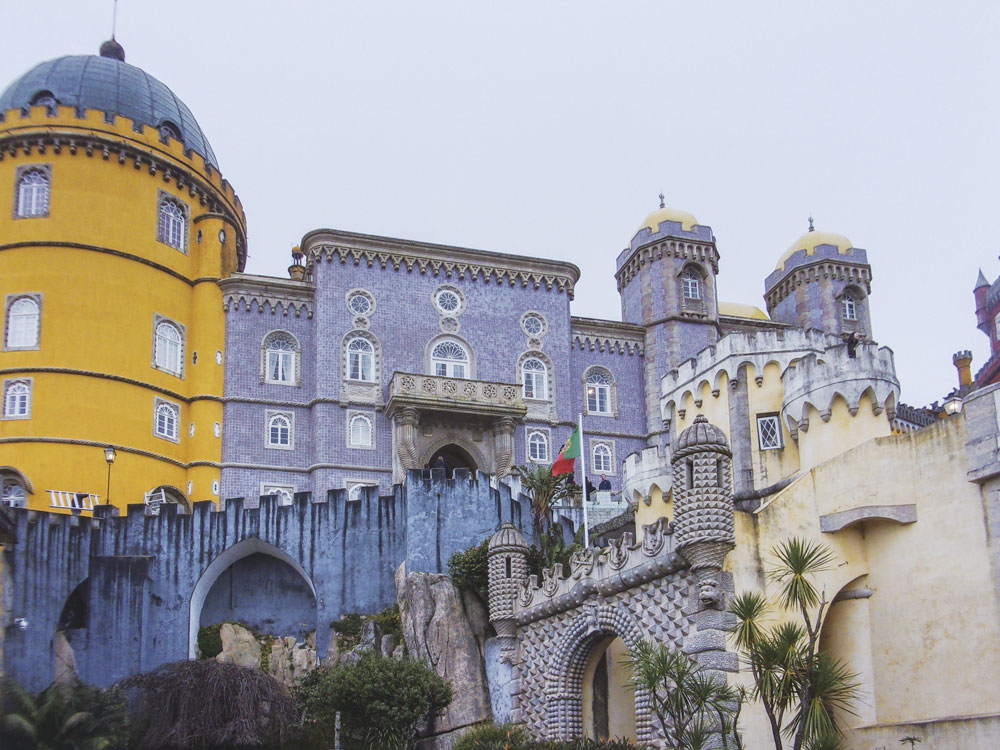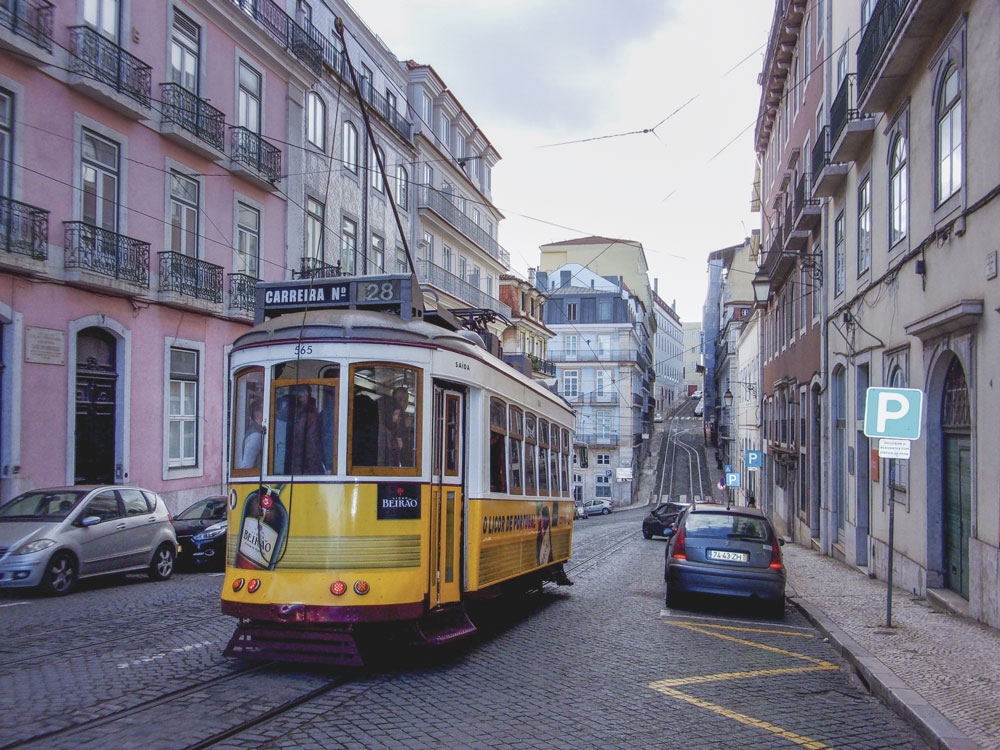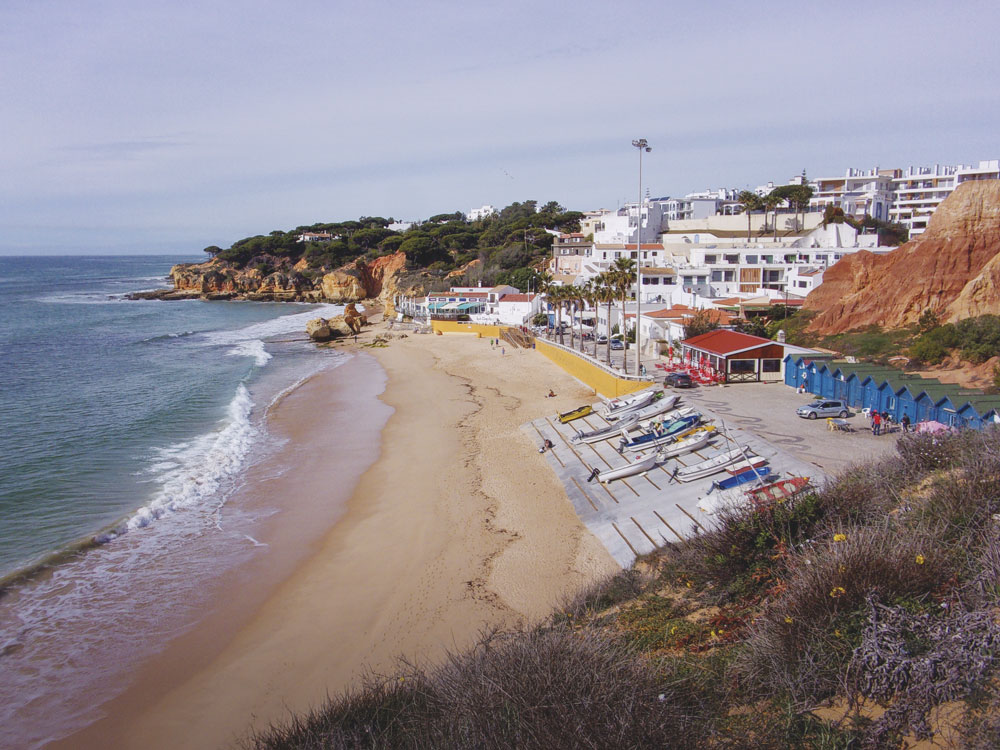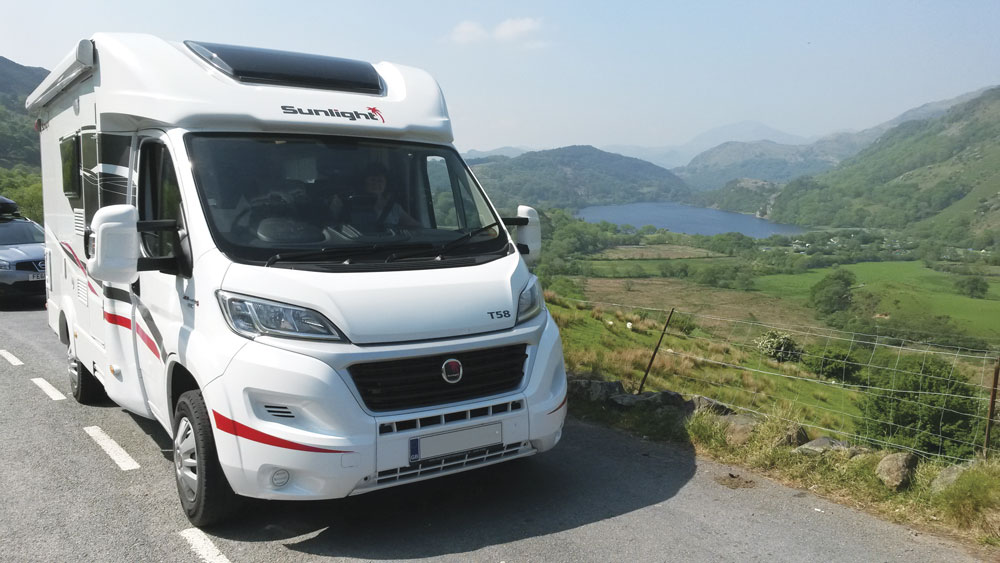Motorhome travel: Escape to the Algarve
Words & Photos by Chris Elliott
This feature was written prior to the coronavirus pandemic. We are publishing it for your enjoyment and to help you plan future trips. Readers must follow the latest government advice before leaving their homes - gov.uk/coronavirus
The attraction of southern Portugal was very strong: we wanted warmer – and drier – weather to enjoy the great outdoors and our favourite activities of cycling, walking and visiting new places in our motorhome, a Sunlight T58.
We spent several weeks crossing France and Spain, at times experiencing very cold weather (we had started in January), but this improved as we crossed into central Portugal from Salamanca in Spain.
The first issue in Portugal was how we should pay for the ‘electronic motorways’. There were no explanations about this as we drove through the rather scruffy border town of Vilar Formoso. I’d read that you needed to buy some sort of card, but couldn’t find any on sale.
With some trepidation we joined the A25 toll motorway and saw a sign that said all foreign vehicles should pull into an aire 11km (seven miles) further on, where our numberplate was photographed. We were also required to register a credit card from which all toll payments would be taken. It seemed really quite simple (but read on...).
Our first stop in Portugal was a free aire (four spaces) about 45 minutes’ drive from the border in the village of Belmonte. It was well laid out with water and waste disposal facilities. Next to it was a small park with toilets and, across the fairly busy main road, was an attractive-looking bar/restaurant.
Belmonte is a hilltop town with a medieval castle (pictured below), but the aire was at the bottom of the hill. The fairly stiff climb was worth it, both to visit the largely intact castle and to get great views of the surrounding countryside from the top of the tower. There are five other museums in Belmonte, but we only had time to visit the castle. Fortunately, the main road went quiet overnight so we had a peaceful first night in Portugal.

We intended to visit the Serra da Estrela and Portugal’s highest mountain. It is also the country’s only skiing resort but it was closed due to lack of snow during our visit.
However, while the weather was fair in our valley location, large black clouds were looming over the mountains on the horizon and heavy snow was forecast. As our aim had been to escape the miserable British winter weather, we decided to continue to the coast before the inevitable arrived.
Nazaré is beachside town famed for having the largest surfing waves in the world when conditions are right. An undersea trench forces waves up to 27m (88ft) high and there is a headland vantage point by the lighthouse where onlookers can watch some of the best surfers in the world tackle these enormous and potentially treacherous waves.
The conditions weren’t right when we were there. Nevertheless, some intrepid surfers were still tackling what, to us, seemed very large waves.
We stayed the night at another free aire at Alcobaça. This was very busy because it had all the facilities of a former campsite, including electricity. The other residents appeared to be mainly long-stay.
We headed off for some of the cultural highlights of our trip, a visit to the palaces of Sintra and a day trip to Lisbon. On the way it was a mixture of electronic motorway tolls and pay booths. At one point we failed to collect a ticket and got stuck at the far end as we couldn’t pay.
Our base in Sintra for two nights was an aire run by a football club. Sintra is a 40-minute train journey from Lisbon and what a fantastic city Lisbon is. We took one of the bus tours to see as much as possible.
As a bit of a transport nut the highlights for me were the vintage trams squeezing through the narrow and windy streets of the city. The number 28 route is a must.

The waterfront of the River Tagus and the Santa Justa Lift, which gave wonderful views over the city, were also very enjoyable.
We relaxed in the wonderful squares, appreciated the architecture of the city and savoured a pastél de nata or two (the delicious custard tarts) whilst sitting outside in one of the many street cafés.
Sintra is a small town in the hills to the west of Lisbon and its microclimate makes it much cooler in the summer than the capital city; this is why the rich and famous built their palaces there in the nineteenth century. The best-known one is the Pena Palace. This dates from the 1840s when an old monastery on the top of a hill was extended to create a very quirky royal palace. The Pena Palace is a mixture of architectural styles, which I describe as Portmeirion meets The Alhambra.
After two days of superb buildings and architecture it was time to carry on south for our main stay on the coast of the Algarve. As we drove through pleasant green and rolling scenery we could almost have been in England, if it hadn’t been for the storks. They build their large nests on top of lampposts and electricity pylons all the way along the side of main roads and make an unforgettable sight.
Our 24-night stay in the Algarve was at Camping Albufeira at a Camping and Caravanning Club rally. The club had exclusive use of one part of the large campsite, which had good, modern and spotlessly clean amenity blocks. The unusual thing was that there were no marked pitches and you could place your unit anywhere on the mixture of gravel and grass provided that you were 2m (6.6ft) from your neighbours.
We arrived several days after heavy rain and some parts were quite muddy, though these dried out very well in the lovely sunny weather that we had for the whole of our stay from late-January until mid-February. We almost felt guilty as we listened to reports of storm after storm sweeping across the UK (this ‘guilt’ soon passed after a few glasses of Mateus Rose, though).
Apart from the good winter weather, the Algarve is renowned for its golden sand beaches along 150km (93 miles) of pristine coastline. It boasts incredible rock formations chiselled out by millions of years of coastal abrasion and we explored it extensively. It was a 30-minute walk, or a five-minute bus ride, into the town from the site.
Albufeira is a busy place and most of the shops, restaurants and bars were open during our stay. The main sandy beach is excellent and fairly quiet in the winter as what is warm to us at around 20°C (68°F) is not warm to most Portuguese or many of the other visitors. You can spot the northern Europeans quite easily because they are the ones wearing shorts.
Slightly to the west of the town, beyond the marina, were a string of small sandy coves, accessible to us by bike. These coves have fantastic rock formations characteristic of the Algarve coastline where the soft rocks have been eroded by the Atlantic swell into a network of stacks, arches and caves. Praia dos Arrifes and Praia São Rafael were particularly good as was the ‘secret’ beach near Albufeira where, behind the cliff, a sandy cove has been created by the sea breaking through a cave.

To the east of the town there are other coves, which are generally more developed, running from Olhos de Água back to Albufeira. We were able to catch a local bus out and then follow a coastal footpath back. In parts the footpath was a bit challenging because of erosion. It was well worth the effort to see up close some of the aforementioned rock formations that erosion has created.
We hired a car for a few days to travel further afield to see more of the area. We particularly enjoyed our visit to Cabo de São Vicente (Cape St Vincent).
The most southwestern tip of Europe has seen eight naval battles fought off its stormy shores, including a famous British victory in 1797 in which a young Commodore Nelson distinguished himself. A lighthouse with a very powerful light, which can be seen up to 60 miles off-shore, stands on the cliff edge and has a small visitor centre and café.
The limestone plateau on which it stands is of great botanic interest. Sally spotted yellow rock roses, a miniature daffodil, white alyssum, purple toad flax and a very rare violet, as well as pink and yellow cistus.
Lagos has an attractive old town within some of the original walls. Many bars and restaurants were open in the narrow, well-kept streets. Just beyond the harbour, at Praia dos Estudantes, an old Roman bridge survives. It links with a large stack that was, presumably, of greater significance 2,000 years ago.
The highlight of the spectacular coastal scenery came just south of the town at the Ponta da Piedade. Here, on a headland, is a small rocky bay that contains a myriad of arches, stacks and caves. You can walk down steps into this bay to marvel at the rock formations in the clear sapphire-blue waters. I think that this place would be better appreciated by boat or kayak, which are available to hire in the busier months.
The other way to travel about from Camping Albufeira is by train. It’s a short bus journey (or a 15-minute cycle ride) to get to the station. The line runs from Faro to Lagos with fairly frequent trains at a very modest cost.
We liked Portimão for its old town and beaches and Silves has a well-preserved hilltop castle dating from the period of Moorish rule in the tenth century. Faro has an attractive harbour for small boats and a small section of its original old town. It is a busy and not very attractive commercial centre and planes landing at the Algarve’s main airport fly low over the town.
All too soon our winter stopover in the Algarve was coming to an end. We’d enjoyed sunshine, beaches and spectacular coastal scenery. Every day we had been able to get out and explore.
Eating out was very reasonable; we particularly enjoyed the fish cataplana (a type of stew) and the already-mentioned pastél de nata.
Staying at the club rally worked very well. Although we did engage in a few of the activities on offer, we mainly did our own thing. If you are thinking about a winter break, it is an option well worth considering.
It had been 30 years since we had previously visited the Algarve in the summer. It will not be another 30 years before we return out of season. The Algarve is a great choice for a winter motorhome holiday. Maybe we were lucky with the weather, but there is so much to see and do.
We were sad to be leaving Albufeira, yet we still had a lot to look forward to on our leisurely trip home.
Seville was only a three-hour drive away, then there was all of Spain’s Mediterranean coast before, maybe, some skiing in the Pyrenees or the Massif Central.

The journey
We drove from Dieppe through France and Spain to reach Portugal in mid-January. We spent 28 days in Portugal, clocking up 620 miles there. In late February we left via southern Spain to return to the UK in mid-March. Total miles: 4,663.
The costs
Fuel Average 30mpg: £781.72
Ferry Return, Newhaven-Dieppe: £194.86
Site fees, 24 nights: £248.40
Tolls, Portuguese motorways: £23.35
Car hire, four days: £88.66
Attractions, two adults, castle at Belmonte, Pena Palace, Lisbon tour including trams and lift: £66.13
Public transport: £34.21
Total costs: £1,437.33
Useful information and links
visitalgarve.pt/en
visitlisboa.com/en
campingandcaravanningclub.co.uk
We stayed at
Aires
6250 Belmonte, Centro (signposted 'Parque de Santiago')
Open: All year
Cost: Free
Avenida dos Combatentes, 2460-016 Albobaca
Open: All year
Cost: Free
Area Autocaravana 1 de decembro, Avenida Conde Sucena, 2710 Sintra
Open: All year
Cost: £6.39, water and electric extra charge
Campsite
Camping Albufeira, Estrada das Ferreiras, EN 395, 8200-555 Albufeira
Telephone: 00351 289 587629
campingalbufeira.pt
Open: All year
Cost: Two adults, pitch and electric, from £12.13








Recent Updates
Engine management lights: all you need to know
What is the engine management light? What does it mean, and what do I have to do? ...
Motorhome air suspension: all you need to know
Motorhomes are heavy and the additional weight of equipment and height of the bodywork can increase the loads ...
Motorhome WiFi: how to get better motorhome internet
Staying connected on the move is more and more essential, so relying on campsite WiFi isn't an option – here ...
A class of their own - our guide to A-class motorhomes
Thinking of trading up to an A-class, or even going straight to the top of the motorhome tree? We guide you ...
Explore overseas on a motorhome dream tour
Enjoy exotic travel in a campervan or motorhome by hiring, swapping with someone else or exporting your ...
Motorhome water systems: everything you need to know
On-board water is an important part of every motorhome – here’s everything you need to know ...
Campervanning in Europe: what you need to know
Whether you're planning a leisurely drive through the French countryside, navigating bustling city streets in ...
Campervan security: all you need to know
With thefts on the increase, it’s important to know how to keep your campervan secure and prevent campervan ...
Campervan furniture: everything you need to know
Our campervan experts guide you through all the essentials for your campervan, including tables, chairs, ...
Campervan finance: how to fund your purchase
Here we look at the different types of campervan finance available, to help you decide what’s the best option ...
Other Articles
Britain’s best used motorhomes
Want a great motorhome without paying the premium for a new one? Here's a guide to the best you can get in the pre-owned market for each layout, ...
Which motorhome? Choosing the perfect motorhome for you
Choosing a motorhome or campervan is one of the biggest buying decisions you’ll ever make, so it's important ...
Campervan washroom essentials: stay fresh on the road
Our guide will take you through the campervan washroom essentials you'll need so you're well-prepared for ...
Dogs in campervans: all you need to know
Follow our advice and your dog will enjoy campervanning as much as you do ...
Electric campervans: all you need to know
Our guide will take you through everything you need to know about electric campervans and what the future ...
Motorhome electrics: a complete guide to your motorhome electrical set-up
Motorhome electrics can dramatically enhance the convenience and comfort of your vehicle – but they can be ...
Lighting for campervans: all you need to know
We guide you through all the lighting options available for you and your campervan, including interior ...
Electric bikes for motorhomes: our ultimate guide
Read our comprehensive guide to electric bikes for motorhome owners, helping you add electric power to your ...
Our guide to 'cheap' motorhomes in 2024
If you're on the hunt for an affordable new motorhome, this is the best place to start – we've rounded up a ...
Campervans in winter: all you need to know
Here's your guide to preparing your campervan for the colder months, whether you will be using it or putting ...